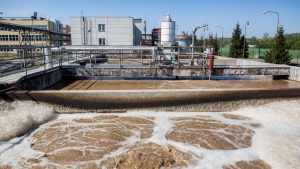The whole process of building the highway is complex, from its construction and maintenance of infrastructure to the handling of vehicles. How many monitoring systems will you need to make sure the highway is secured for the general public? The answer is ‘uncountable’. What if you have one consolidated system to inspect all these aspects of a highway under one singular dashboard? This is where the power of the ‘Total Highway Management System’ lies.
In this article, we look into the implementation of a ‘Total Highway Management System’ to ensure the quality and performance of the highways in Australia meet expected standards.
What is 'Total Highway Management'?

- This is a comprehensive approach to managing and optimising road networks. As its name suggests, it is a total management that the highway receives from the initial point to the successful execution after completion. Without inspecting each aspect of the highway elements through various technologies, this system consolidates every tool under one singular platform to provide full-scale coverage.
- It integrates various technologies, including sensors, cameras, and data analytics, to monitor traffic flow, road conditions, and incidents in real-time.
- If we consider ‘aftercare’ for highways, this system helps authorities to efficiently manage traffic, detect issues like accidents or congestion promptly, and respond effectively without compromising the quality of the service they are supposed to provide. It includes each aspect, from scheduling maintenance, managing incidents, and controlling traffic to making data-driven decisions in order to improve road infrastructure performance overall and minimise accidents in the end.
- These tasks are not that complicated as the ‘Total Highway Management’ comes out with various robust technologies and data, and it aims to improve the efficiency of transportation networks as the best outcome. It also has the capacity to enhance user experience and contribute to economic development while ensuring the safety and reliability of roadways.
Major Benefits of the Total Highway Management System

Data-Driven Decision Making
This unified system uses historical and real-time data gathered from several sources inside road networks to support data-driven decision-making.
This system combines cameras, sensors, and other technologies to collect extensive data on weather patterns, events, road conditions, and traffic flow. Transportation authorities can find out much about traffic patterns, areas for traffic jams, accident frequency, and infrastructure performance by examining this data.
The large amount of data makes it possible to make well-informed decisions on emergency response plans, maintenance schedules, infrastructure upgrades, and traffic management tactics. With the help of such data-driven assessments, authorities can more efficiently distribute their resources, forecast possible problems, and detect patterns to be on the safe side.
This is one of the majorly employed business strategies, which ensures a more effective and dependable transportation system for the general public by optimising resource utilisation, improving operational efficiency, and allowing proactive steps to improve road safety and overall network performance.
Enhanced Safety
As we mentioned before, this plethora of technologies consolidates a massive amount of data from different sources. Through a network of sensors, cameras, and data analytics, it continuously assesses traffic flow, road conditions, and potential hazards. As a result of this proactive watching, authorities can respond quickly in the case of an accident, traffic jam, or bad weather situation, which is very common in Australia.
If elaborated more, the rapid response times backed up by the latter technology have the ability to help with the quick clearance of incidents, reducing the risk of secondary accidents and minimising disruptions. Furthermore, the system supports the application of dynamic traffic control strategies to reduce congestion and improve safety, such as changing speed limits or lane management.
As you can see, this technology offers a safer road environment, reduces accidents, and protects travellers and other road users by immediately recognising and correcting problems.
Cost Savings
How much would it cost to purchase all these systems? The amount is just unpredictable! But if you hold hands with such a system that provides a centralised overview of highway elements, it generates substantial cost savings by offering one platform to monitor, analyse, and optimise various facets of highways. Through cutting-edge tools, it provides comprehensive insights into traffic flow, road conditions, and infrastructure performance.
This centralised oversight helps the authorities to embrace efficient allocation of resources and proactive maintenance scheduling, preventing minor issues from escalating into costly repairs or disruptions. Plus, real-time traffic management techniques, such as dynamic rerouting, variable speed restrictions, and lane control, reduce overcrowding and decrease fuel consumption and travel time, which benefits both transport operators and passengers.
This broad method of controlling highways maximises the lifespan of infrastructure, lowers costs, and optimises operations, which results in major cost savings for both the end-users and authorities.
Improved Asset Management
A Total Highway Management System revolutionises another aspect of highway management which is asset management. As it helps authorities provide a unified platform to comprehensively monitor and analyse all aspects of the highway infrastructure, asset management is no longer a burden. It constantly collects real-time data on road conditions, traffic flow, and infrastructure performance using integrated sensors and data analytics and floats these data to the controlling dashboards through the Internet of Things (IoT) technology.
As a result of the large amount of data, predictive maintenance is made possible, allowing authorities to identify any issues early on and take appropriate action before they develop. The solution extends the life of infrastructure like roads, bridges, and signs by proactively managing maintenance plans based on data-driven insights, which lowers the frequency of significant repairs or replacements.
This proactive plan minimises total lifetime costs, maximises the lifespan of highway assets, and assures effective resource allocation, which improves asset management and sustains the quality of the infrastructure for a longer period.
Emergency Response
It clearly enhances emergency response capabilities with the power to swiftly detect and manage incidents on highways. You already know that the authorities can keep an eye on the traffic flow and road conditions through real-time data collection via sensors and cameras that are coupled with the ‘Total Highway Management System’.
When accidents, breakdowns, or severe weather conditions occur, the system automatically sends alerts to authorities, helping quick and targeted responses. That is how emergency services receive precise information about incident locations and severity, encouraging rapid deployment of resources.
It is also possible to expedite response times by using dynamic traffic management methods to redirect traffic, clear damaged lanes, and direct emergency vehicles without delays.
Enhanced Highway Performance
All the elements that are covered through this consolidated system help with the overall highway performance by integrating cutting-edge technology to optimise traffic flow, safety, and infrastructure management. This technology offers real-time insights into traffic patterns, road conditions, and events through continuous data collecting and processing.
As it can employ dynamic traffic control strategies based on this data, such as adaptive signalling, variable speed limits, and lane management, it enhances overall traffic flow efficiency as you expect.
On the other hand, proactive maintenance scheduling and predictive analytics ensure timely repairs, preventing disruptions and extending the lifespan of infrastructure. As you can see, all the aspects of the highway have been covered through the utilisation of this unified system for highways.
Ensuring Full-Coverage with the Total Highway Management System

You can drastically reduce the cost you have to spend on the massive load of systems that cover each aspect of the highways when you opt for a reasonable option like a ‘Total Highway Management System’. When you collaborate with a reputed supplier, you are powered to embrace this new technology in order to maximise ROI at the end of the day.







